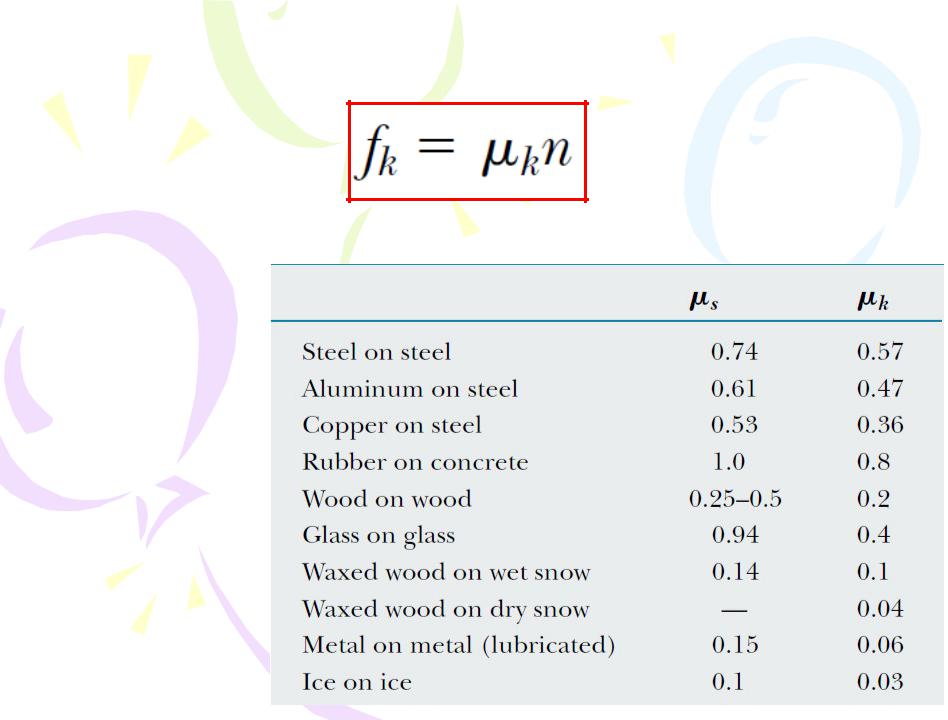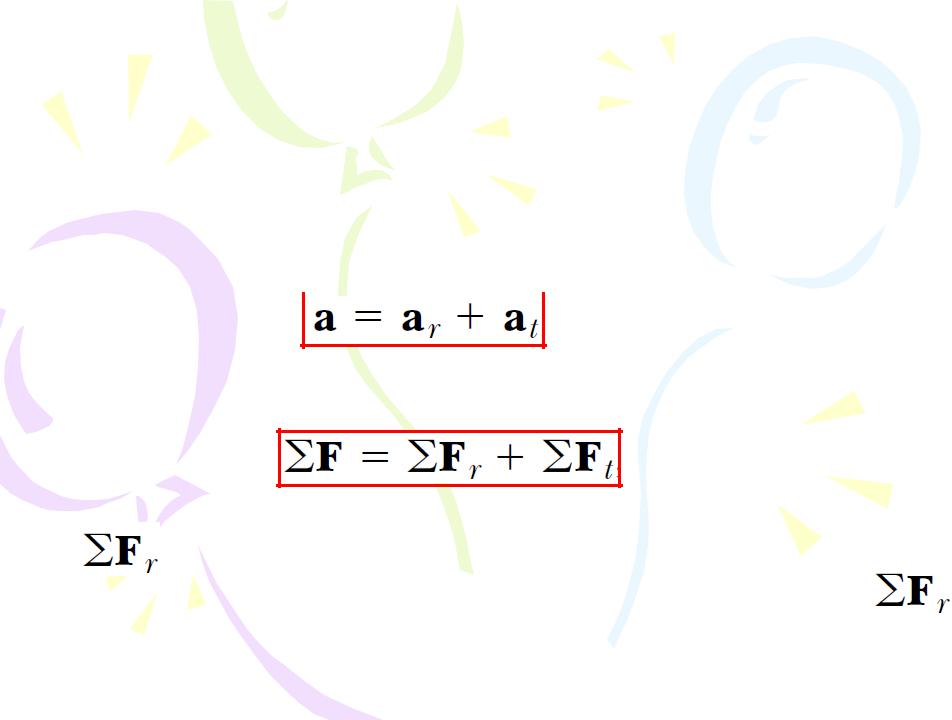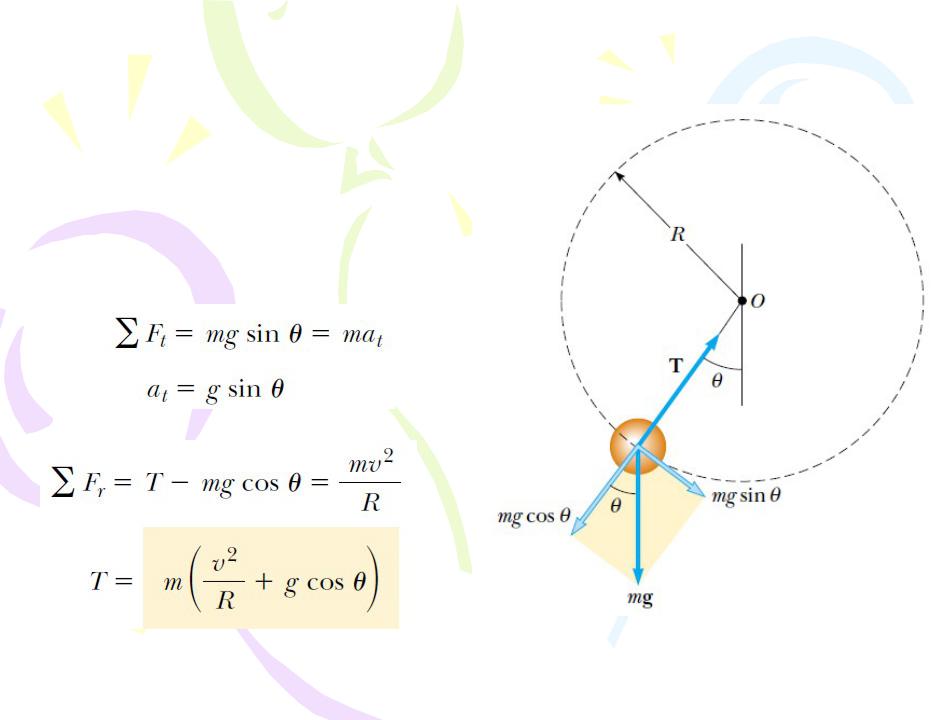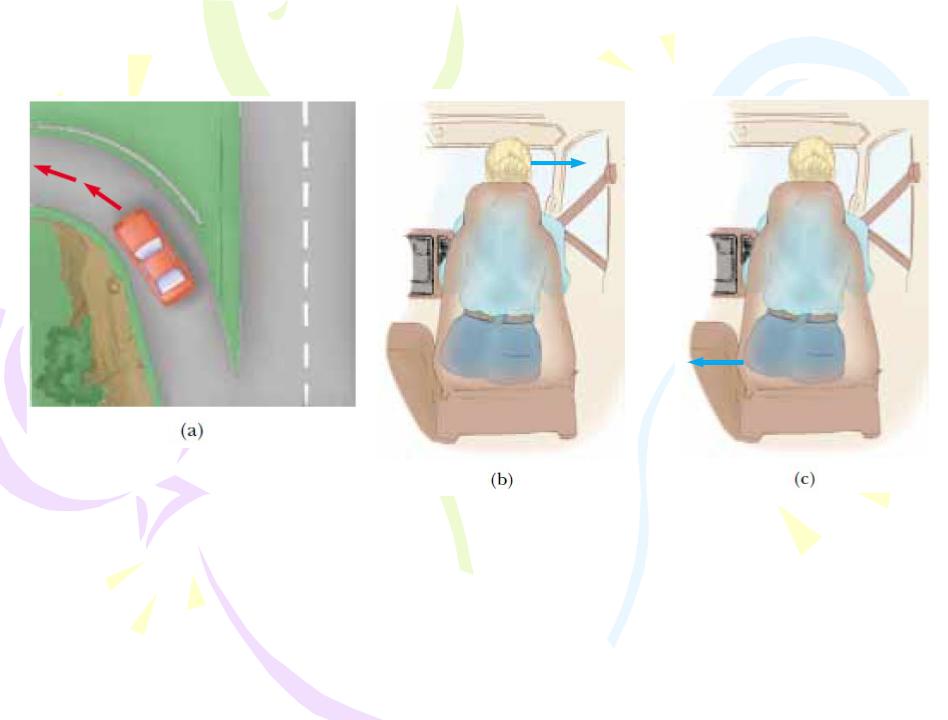
- •Quick Quiz 1 If a car is traveling eastward and slowing down, what
- •Course of lectures «Contemporary Physics: Part1»
- •Previously we described motion in terms of position, velocity, and acceleration without considering
- •contact forces
- •The Concept of Force
- •The Concept of Force
- •Newton’s First Law
- •Newton’s First Law
- •Newton’s First Law
- •Mass
- •Mass
- •Mass
- •Mass
- •Newton’s Second Law
- •Newton’s Second Law
- •Newton’s Second Law
- •Newton’s Second Law
- •Newton’s Second Law
- •Unit of Force
- •The Gravitational Force and
- •The Gravitational Force and
- •Newton’s Third Law
- •Newton’s Third Law
- •Newton’s Third Law
- •Newton’s Third Law
- •Newton’s Third Law
- •Newton’s Third Law
- •Forces of Friction
- •Forces of Friction
- •Forces of Friction
- •Forces of Friction
- •Forces of Friction
- •The magnitude of the force of kinetic friction acting between two surfaces is
- •Newton’s Second Law Applied
- •Figure 2. Overhead view of a ball moving in a circular path in
- •Nonuniform Circular Motion
- •Nonuniform Circular Motion
- •Motion in Accelerated Frames
- •Motion in Accelerated Frames
- •Quick Quiz 1 If a fly collides with the windshield of a fast-moving

Forces of Friction
At the same time with changing of direction of force F the direction of force of friction also changes. Thus module and direction of force of friction are defined by module and direction of that external force, which it balanced: force of static friction equals on module and opposite to direction of that external force, which approaches to cause the slipping of one body on another one. 
The magnitude of the force of static friction between any two surfaces in contact can have the values 
(2.6)
where the dimensionless constant is called the coefficient of static friction and n is the magnitude of the normal force exerted by one surface on the other.

Forces of Friction |
Fig. 1 – Example of force of friction |
We call the friction force for an object in motion the force of kinetic friction fk .

The magnitude of the force of kinetic friction acting between two surfaces is 
(2.7)
where  is the coefficient of kinetic friction.
is the coefficient of kinetic friction.
Table 1. Coefficients of Friction

Newton’s Second Law Applied
to Uniform Circular Motion
A particle moving with uniform speed v in a circular path of radius r experiences an acceleration that has a magnitude:
The acceleration is called centripetal acceleration because ac is directed toward the center of the circle. Furthermore, ac is always perpendicular to v.

Figure 2. Overhead view of a ball moving in a circular path in a horizontal plane. A force Fr directed toward the center of the circle
keeps the ball moving in its circular path.
If we apply Newton’s second law along the radial direction, we find that the net force causing the centripetal acceleration can be evaluated:
(2.8)

Nonuniform Circular Motion
If a particle moves with varying speed in a circular path, there is, in addition to the radial component of acceleration, a tangential component having magnitude dv/dt. Therefore, the force acting on the particle must also have a tangential and a radial component. Because the total acceleration is 

the total force exerted on the particle is
(2.9)
The |
vector is directed toward the center of |
the circle and is |
responsible for the centripetal acceleration. The vector |
ttt |
|
tangent to the circle is responsible for the tangential acceleration, which represents a change in the speed of the particle with time.

Nonuniform Circular Motion
A small sphere of mass m is attached to the end of a cord of length R and set into motion in a vertical circle about a fixed point O. Determine the tension in the cord at any instant when the speed of the sphere is v and the cord makes an angle θ with the vertical.

Motion in Accelerated Frames
Figure 3. (a) A car approaching a curved exit ramp. What causes a front-seat passenger to move toward the right-hand door? (b) From the frame of reference of the passenger, a force appears to push her toward the right door, but this is a fictitious force. (c)
Relative to the reference frame of the Earth, the car seat applies a leftward force to the passenger, causing her to change direction along with the rest of the car.

Motion in Accelerated Frames
Figure 4.

Quick Quiz 1 If a fly collides with the windshield of a fast-moving bus, which object experiences an impact force with a larger magnitude? (a) the fly (b) the bus (c) the same force is experienced by both.
Quick Quiz 2 In a free-body diagram for a single object, you draw (a) the forces acting on the object and the forces the object exerts on other objects, or
(b) only the forces acting on the object.
Quick Quiz 3 Which of the following is impossible for a car moving in a circular path? (a) the car has tangential acceleration but no centripetal acceleration. (b) the car has centripetal acceleration but no tangential acceleration. (c) the car has both centripetal acceleration and tangential acceleration.
